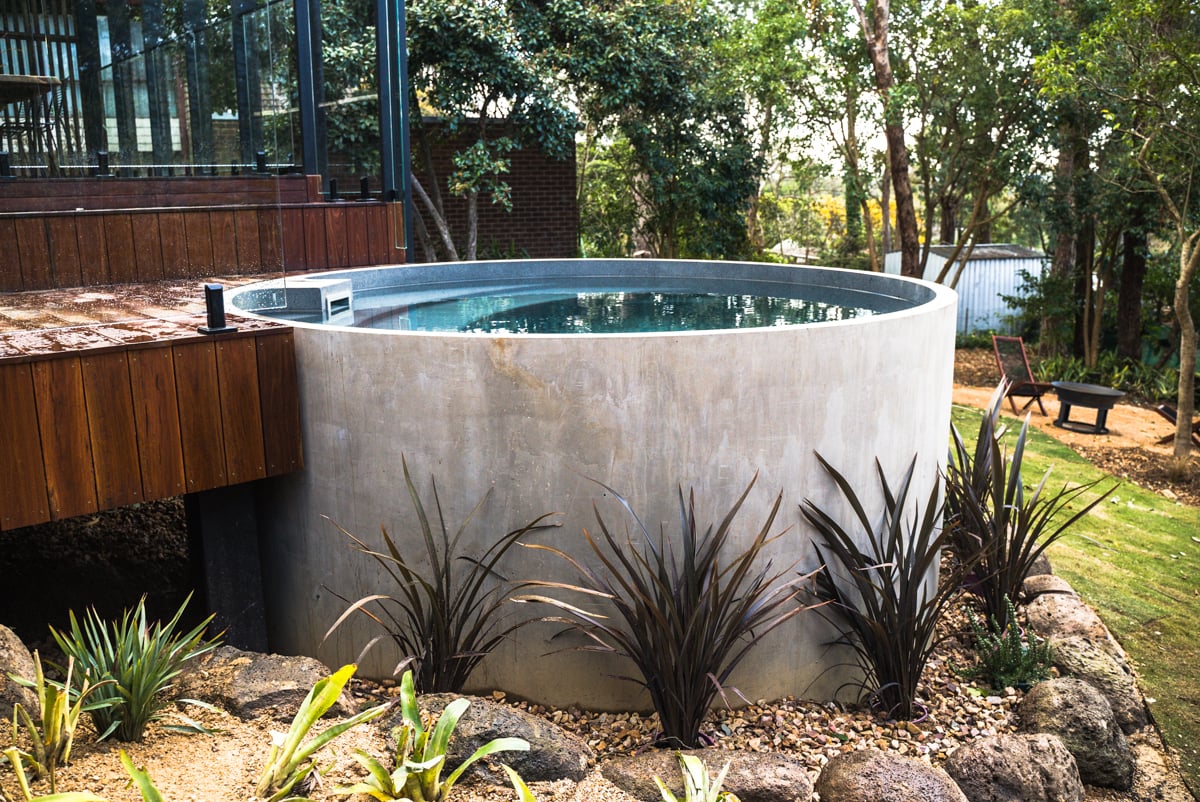Dreaming of a backyard oasis without the full-blown excavation of an inground pool? An above ground concrete pool might be your perfect solution. This guide dives deep into everything you need to know, from design and construction to long-term costs and maintenance. Think of this as your blueprint for building a backyard paradise that’s both durable and dazzling.
Why Choose an Above Ground Concrete Pool?
So, you’re picturing a shimmering pool in your backyard, but maybe the traditional inground route seems a bit much. An above ground concrete pool offers a compelling alternative, blending the strength and design flexibility of concrete with a less invasive installation process. Unlike those flimsy, pre-fabricated pools, a concrete pool is built to last, offering decades of enjoyment. It’s like building a house – you’re creating a permanent structure, not just setting up a temporary tent. Plus, you can build them almost anywhere, even on a slope! Intrigued? Let’s dive in.
Is an Above Ground Concrete Pool Right for Your Budget?
Let’s be upfront about the cost. Building an above ground concrete pool is likely going to be a larger initial investment than a standard above ground pool kit, and possibly even some basic inground options. However, consider it a long-term investment. That higher upfront cost pays for incredible durability and potentially lower maintenance expenses over time. Say goodbye to liner replacements that can ding your wallet with vinyl liner pools! A well-maintained concrete pool can last for decades, saving you money in the long run.
Building Your Concrete Oasis: A Step-by-Step Guide
Building an above ground concrete pool isn’t a weekend DIY project, but it’s achievable with careful planning and execution, or by hiring experienced professionals. Here’s a breakdown:
-
Site Prep: Leveling the ground is crucial. An uneven base can compromise the structural integrity of your pool. Think of it as preparing the perfect canvas for your masterpiece.
-
Formwork: Constructing temporary forms, usually from wood, will shape the concrete as it sets. These forms act like a mold, giving your pool its desired shape.
-
Reinforcement: Reinforcing the concrete with rebar (steel bars) provides essential strength and prevents cracking. Think of it as the skeleton of your pool walls.
-
The Pour: Pouring the concrete is where it all comes together. It’s like pouring batter into a cake pan, but on a much grander scale!
-
Curing Time: Patience is key. The concrete needs several weeks to cure and reach maximum strength.
-
Finishing Touches: Now for the fun part! Applying waterproof coatings and finishes like plaster, tile, or paint adds personality and style. If you need to access your pool conveniently and elegantly, you need to check out our above ground pool deck ladder. They come in different heights and designs that you will surely enjoy. Our above ground pool slide is another excellent piece for your above-ground pool that can triple the fun for you and the kids.
-
Equipment Installation: Finally, install the pumps, filters, and other equipment necessary to keep your pool sparkling clean and comfortable.
Design Your Dream: Unleash Your Creativity
The beauty of concrete lies in its design flexibility. Customize the shape, size, and depth to perfectly complement your backyard. From classic rectangles to freeform oases, the possibilities are endless. Choose from a variety of finishes, from smooth plaster to vibrant tile, to create a look that’s uniquely yours. Seamlessly integrate your pool with landscaping, decks, and patios for a cohesive and stunning backyard retreat.
Keeping it Sparkling: Maintenance Made Easy
Maintaining an above ground concrete pool is similar to caring for an inground one. Regular cleaning, chemical balancing, and occasional resurfacing will keep your pool in top condition. Consider incorporating easy access features like ladders, stairs, or a ramp during the design phase.
Weighing the Pros and Cons: A Balanced View
Like any significant investment, consider the advantages and disadvantages before diving in:
| Pros | Cons |
|---|---|
| Exceptional Durability and Longevity | Higher Upfront Cost |
| Unmatched Design Flexibility | More Complex Construction Process |
| Seamless Landscaping Integration | Requires Experienced Builders or Diligent DIY Skills |
| Ideal for Sloped Terrain |
Building on Solid Ground: Placing an Above Ground Pool on Concrete
Thinking about placing a standard above ground pool on a concrete slab? Absolutely possible, and it offers a rock-solid base. But proper planning is essential. Concrete doesn’t absorb water, so drainage is paramount.
-
Leveling: Ensure your concrete slab is perfectly level. Use self-leveling compound if necessary.
-
Drainage: Install a drainage system to direct water away from the pool.
-
Pool Pad: Protect your liner with a foam pool pad between the concrete and liner.
-
Liner Selection: Choose a liner designed for hard surfaces.
Addressing pre-existing slopes in the concrete slab may require professional consultation and potentially more extensive leveling.
| Pros of Placing on Concrete | Cons of Placing on Concrete |
|---|---|
| Stable and Level Base | Requires Meticulous Drainage Planning |
| Increased Pool Stability | Can Be More Costly Initially |
| Protects Liner from Punctures (with Pad) | Slope Correction Can Be Complex |
| Enhanced Pool Longevity |
Diving Deep into Cement Pools: Pros, Cons, and Types
Let’s take a closer look at the advantages and disadvantages of cement (concrete) pools:
Pros:
- Longevity: Cement pools are incredibly durable, potentially lasting 50 years or more with proper care.
- Design Versatility: Customize the shape, size, depth, and finishes to create your dream pool.
- Enhanced Curb Appeal: A beautiful concrete pool can significantly enhance your property’s aesthetic value.
Cons:
- Cost: Cement pools typically have the highest initial installation cost.
- Professional Installation: Construction requires experienced builders.
- Time: Building a cement pool can be a time-consuming process.
- Maintenance: Regular maintenance is essential for long-term performance.
Types of Cement Pools:
| Feature | In-Ground Cement Pool | Above-Ground Cement Pool |
|---|---|---|
| Location | Below Ground Level | Above Ground Level |
| Cost | More Expensive | Less Expensive |
| Permanence | More Permanent | Less Permanent |
| Appearance | Luxurious, Integrated with Landscape | Visible Structure, Can Be Aesthetically Pleasing |
| Space Required | Requires Significant Yard Space | Suitable for Smaller Yards |
How Long Do Cement Pools Really Last?
While you might hear claims of cement pools lasting generations, a more realistic lifespan is 50-75 years for in-ground pools and 10-20 years for above-ground ones. Several factors influence longevity:
- Construction Quality: Proper materials and techniques are crucial.
- Maintenance: Regular cleaning, chemical balancing, and equipment upkeep are essential.
- Water Chemistry: Balanced water chemistry prevents damage to surfaces and equipment.
- Climate: Harsh weather can impact the pool’s lifespan.
Building an above ground concrete pool is a significant undertaking, but the result can be a truly personalized and long-lasting backyard paradise. While concrete offers exceptional longevity, research continually explores new materials and techniques. So, while today’s concrete is incredibly durable, tomorrow’s innovations might offer even more resilience. Remember, ongoing research is always refining best practices, so staying informed is key! Enjoy your swim!
- Annapolis Mall Map & Directory: Find Stores, Restaurants & More - March 29, 2025
- Angel of Harmony Statue Vandalized at St. Louis Cathedral Basilica - March 29, 2025
- Amur River Maple ( Acer ginnala): A Comprehensive Guide (Including Invasiveness) - March 29, 2025










